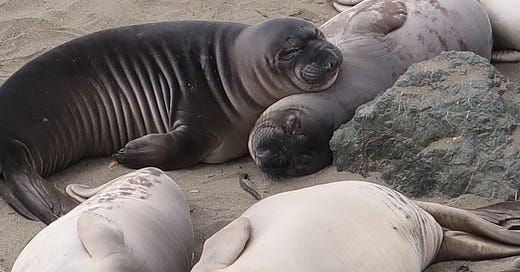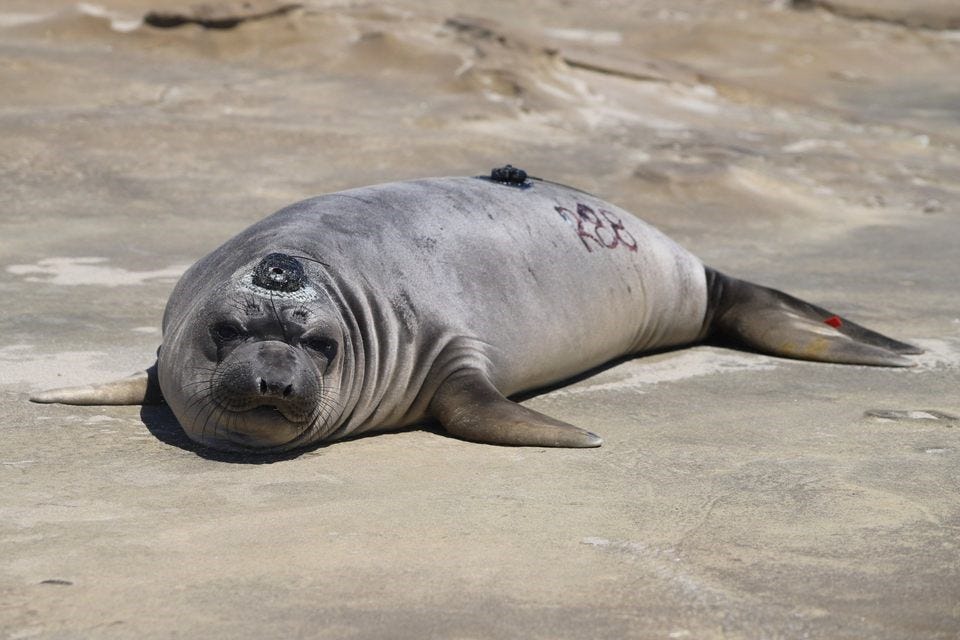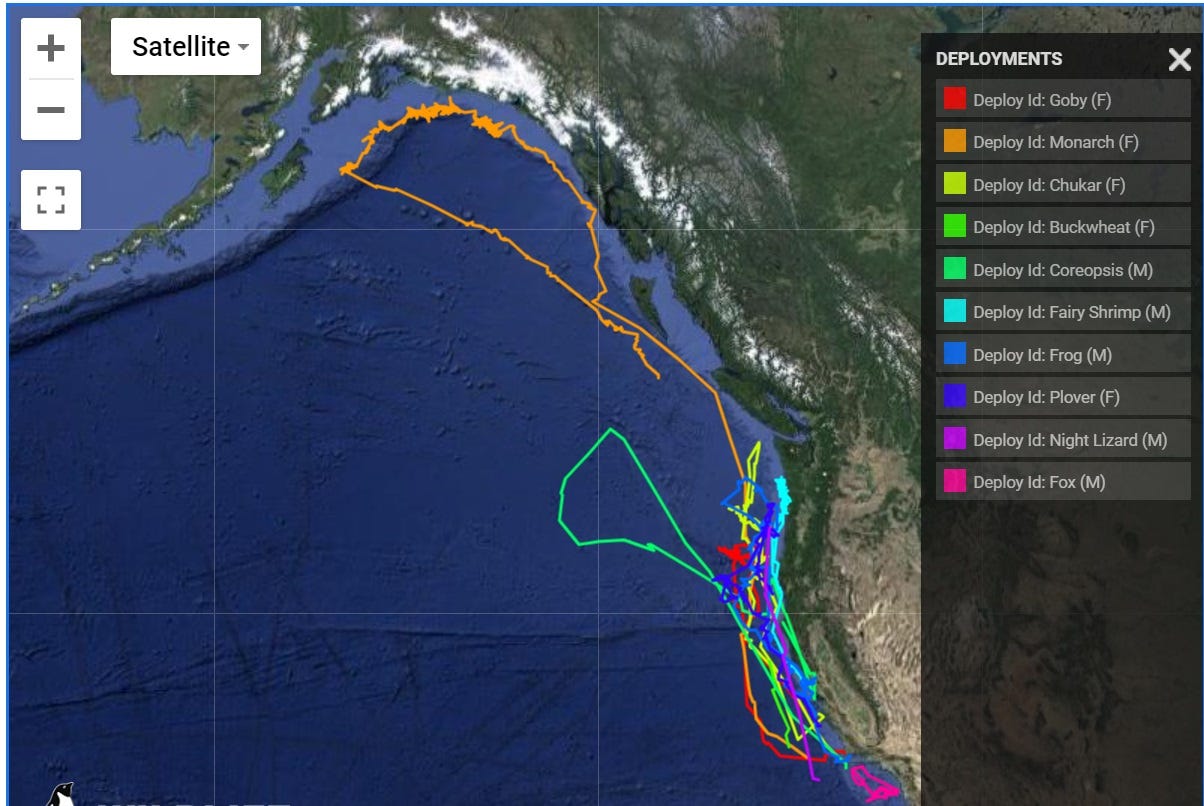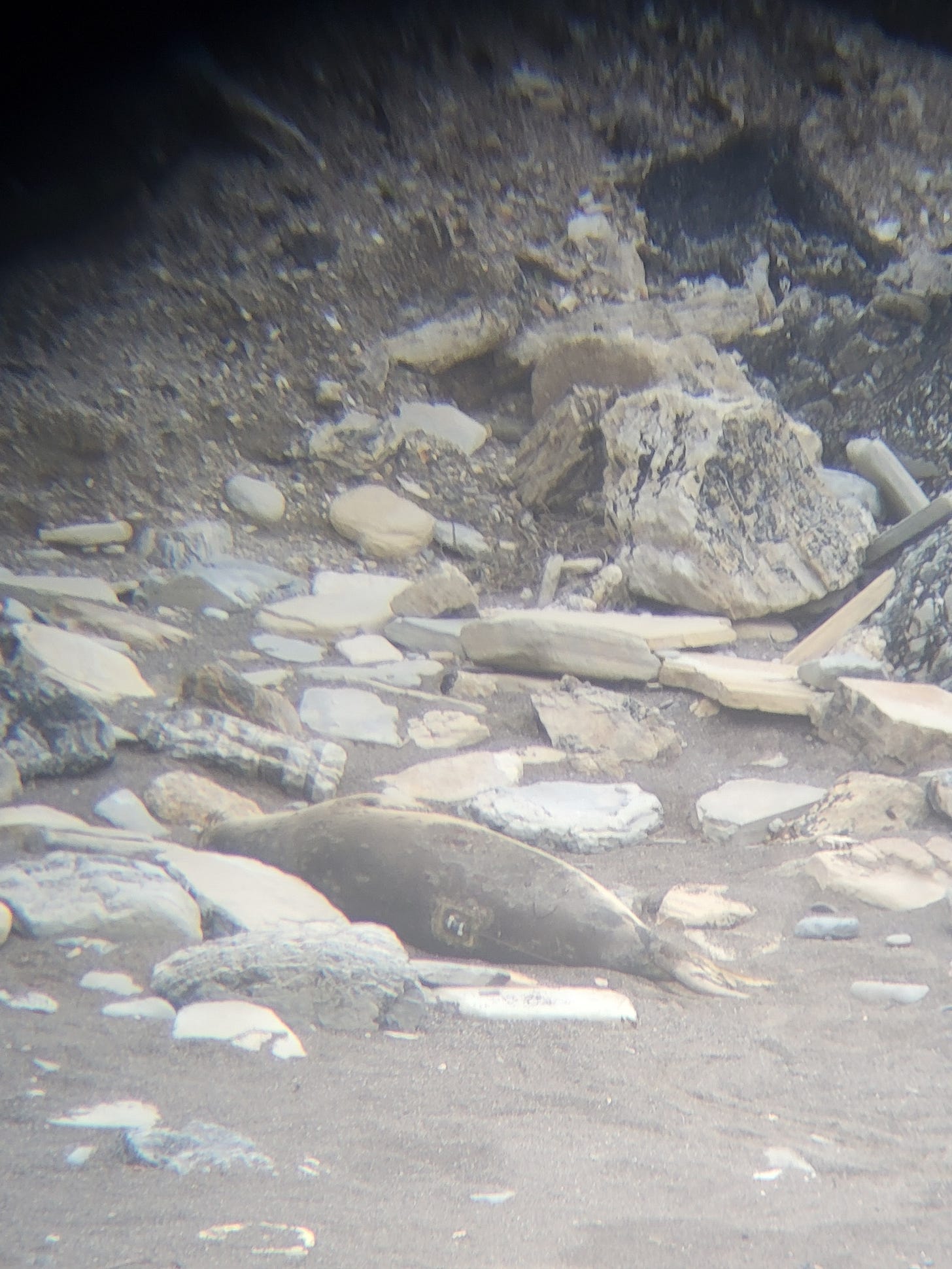Tracking ten elephant seal pups revealed that although most didn’t travel too far in their first migration, one went all the way from Central California to the Aleutians.
Elephant seals are migratory seals in the North Pacific. Pups are born on California and Mexican beaches in the winter. Their mothers wean them after nursing for a month, and the pups are on their own. After practicing swimming and holding their breath for a few weeks, they leave the beach on their first migration.
Only about half survive to return to the beach in the fall.
Electronic tags are expensive, and with that kind of loss rate, pups haven’t often been studied. But Associate Professor Heather Liwanag and her graduate students at Cal Poly in San Luis Obispo decided to track ten.
They tagged five at the Vandenberg Space Force Base beach and five pups on San Nicolas Island in April 2023.
The researchers nicknamed the seals for local wildlife: Frog, Plover, Goby. Monarch’s name turned out to be especially apt. Monarch butterflies are also long-distance migrators.
Nine of the pups stayed close, migrating along the California-Mexico coast.
One of the Vandenberg seals, Monarch, swam north and kept on going.
I was one of the observers who watched her progress. She was doing so great! Going farther than anyone thought pups go on their first migration. Go, Monarch!
Her up-and-down zig-zagging indicated that she was finding food in those cold Alaskan waters. Out to the edges of the Aleutian Islands, nearly to Russia.
On October 5, 2023, after six months at sea, she turned south and headed back to California. Then, suddenly on October 26, her device’s signal stopped.
That usually means the pup met its fate in the jaws of a white shark. We consoled ourselves that Monarch had traveled well, had distinguished herself, even if she met a tragic end.
But it wasn’t. It was only the transmitter battery that failed. Monarch was still swimming south. Her tracker wasn’t reporting.
On May 12, a scientist taking a bird survey saw her on the beach.
Julie Howar, Senior Marine Ecologist and GIS Specialist from Point Blue Conservation, was performing bird surveys at Vandenberg when she saw two elephant seals wearing transmitters on their heads. One was this year’s weanling, Aurora, who had not yet left the beach after being tagged in April 2024. The other was a juvenile.
Dr. Howar used her spotting scope to take a photo. She was able to read a couple of digits on the seal’s flipper tag. She reported the sighting to Liwanag.
It was Monarch!
“It was amazing that Julie knew what to look for and reached out to me!” Liwanag said.
Surviving the first migration is significant, since only about half of the pups do. They usually gain little, if any, weight. Monarch went a step better: she gained 73 pounds. The fishing in Alaska was good.
“We were so excited when we figured out it was her,” said Liwanag. “She is the first seal to demonstrate that weanlings can go as far as Alaska, which we did not expect.”
Tomorrow: Recovering the data recording device.







